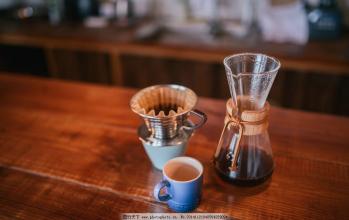Grinding scale treatment of Colombian coffee beans with unique flavor introduction to the origin of varieties
Colombian coffee has a silky taste. Colombian coffee is equated with high quality and good taste. It is sweet in acid, low in bitterness, rich in nutrition, with a unique sour and mellow taste, and the sour, bitter and sweet flavors of Colombian super coffee match well. Unique fragrance, after drinking, the aroma fills the whole mouth. Exhale the aroma from the mouth again from the nose, the smell is very full. Perhaps you will find it too overbearing, because it will occupy the taste buds, mind and even soul as quickly as possible. In people's life, it is full of sour, sweet, bitter and astringent, and the aroma of this coffee is enough to take away everything in the world. What people enjoy is not just a cup of coffee, but also the quiet moment that coffee brings to people. The most characteristic of Columbia super class is its aroma, full-bodied and thick, with clear high quality acidity, high balance and endless aftertaste.
The main varieties of Colombian coffee are small grains of coffee. Plants are small trees or large shrubs, 5-8 m tall, usually much branched at base; old branches gray-white, nodes dilated, young branches glabrous, compressed. Leaves thinly leathery, ovate-lanceolate or lanceolate, 6-14 cm long and 3.5-5 cm wide, apex long acuminate, acuminate part 10-15 mm long, base cuneate or slightly obtuse, rarely rounded, entire or shallowly wavy, both surfaces glabrous, lower vein axils with or without small pores; midrib raised on both surfaces of leaf, 7-13 on each side of lateral veins; petiole 8-15 mm long Stipules broadly triangular, arising from the tip of the upper part of the young branch conical or awn tip, the tip of the old branch is often protruding tip, 3-6 mm long. Cymes several clustered in leaf axils, each with 2-5 flowers, without a total pedicel or with a very short peduncle; flowers fragrant, with pedicels 0.5-1 mm long
The pure taste of Colombian coffee comes from Colombia's natural environment with the most favorable conditions for coffee growth. But beyond that, it is inseparable from the hard work of local growers. In Colombia, coffee cultivation has reached 1.07 million hectares, there are about 302000 coffee plantations in the country, and 30 to 40 per cent of the rural population depends directly on coffee production. Although there are many farms in Colombia, they are not large in area. The area of each farm is only about 2 hectares, and more than 80% of the coffee plantations have only about 5000 coffee trees, with an average of 3000.
Coffee workers go up the mountain to pick coffee beans (also known as coffee cherries) by hand, so they can pick carefully and pick the most ripe and full fruits. The vast majority of Colombian coffee beans are water-washed and moderately roasted with a light silky and sometimes sour taste, which is not as strong as Brazilian coffee and Italian Expresso, and is known as "green gold"

Important Notice :
前街咖啡 FrontStreet Coffee has moved to new addredd:
FrontStreet Coffee Address: 315,Donghua East Road,GuangZhou
Tel:020 38364473
- Prev

Flavor description of Kenyan coffee beans with rich and perfect taste introduction to the production area of grinding scale treatment
People in the coffee industry all think that Kenyan coffee is one of its favorite products because Kenyan coffee contains every feeling we want from a good cup of coffee. It has wonderful and satisfying aromas, well-balanced acidity, well-proportioned particles and excellent fruit flavors. The taste is so unique that there is almost no similar coffee. The characteristics of Kenyan coffee
- Next

Description of Flavor and Flavor of High-quality Rwandan Coffee beans introduction of varieties produced by grinding scale
Rwanda has been growing coffee since colonial times. Although the crops are mainly coffee, the quality of coffee produced in Rwanda is not outstanding, and its status in the coffee world is low, and few people pay attention to it. Most of the coffee varieties grown in Rwanda are bourbon. Rwanda, known as the country of Thousand Hills, has a high-altitude mountain environment, fertile volcanic soil and abundant precipitation.
Related
- Detailed explanation of Jadeite planting Land in Panamanian Jadeite Manor introduction to the grading system of Jadeite competitive bidding, Red bid, Green bid and Rose Summer
- Story of Coffee planting in Brenka region of Costa Rica Stonehenge Manor anaerobic heavy honey treatment of flavor mouth
- What's on the barrel of Blue Mountain Coffee beans?
- Can American coffee also pull flowers? How to use hot American style to pull out a good-looking pattern?
- Can you make a cold extract with coffee beans? What is the right proportion for cold-extracted coffee formula?
- Indonesian PWN Gold Mandrine Coffee Origin Features Flavor How to Chong? Mandolin coffee is American.
- A brief introduction to the flavor characteristics of Brazilian yellow bourbon coffee beans
- What is the effect of different water quality on the flavor of cold-extracted coffee? What kind of water is best for brewing coffee?
- Why do you think of Rose Summer whenever you mention Panamanian coffee?
- Introduction to the characteristics of authentic blue mountain coffee bean producing areas? What is the CIB Coffee Authority in Jamaica?

